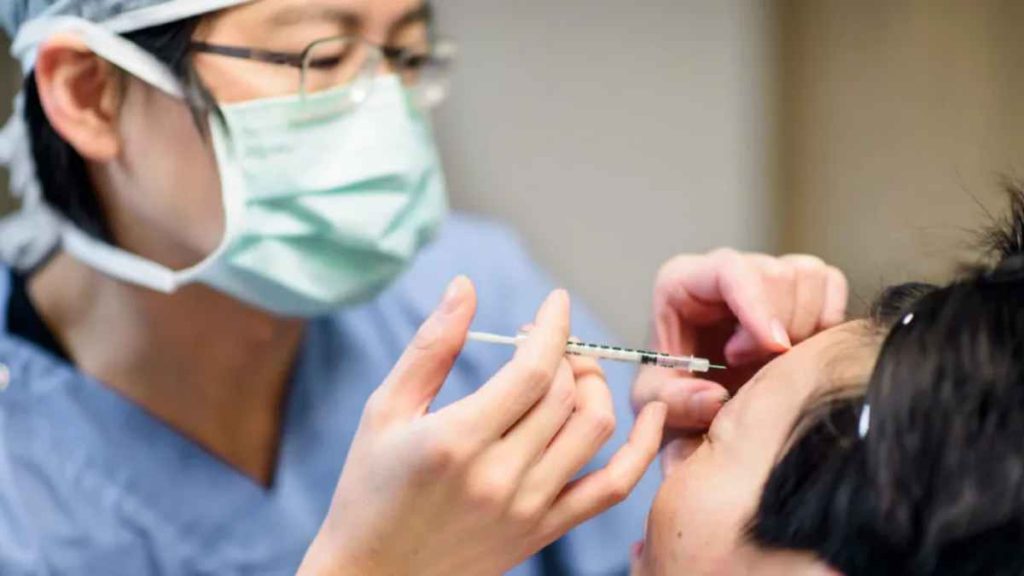Botox® is the brand name for botulinum toxin type A, a neurotoxic protein that is produced by the bacterium called “Clostridium botulinum.”
This substance is commonly used to smooth out wrinkles and fine lines on the face, particularly those that form around the eyes and forehead. That’s probably how you’ve heard of it.
But did you know that Botox® is actually a prescription medication that is used to treat a number of medical conditions by temporarily paralyzing muscles?
Some of the medical uses for Botox® include:
Treating muscle spasms and other movement disorders
Botox® can be used to treat muscle spasms and other movement disorders, such as cervical dystonia, spasmodic torticollis and hemifacial spasm (uncontrolled contraction of facial muscles on one side of the face). One of the most popular muscle contractions Botox® is used to treat is on the temporomandibular joint (TMJ). This is otherwise known as jaw clenching.
Botox® can also be used to treat stroke patients who experience limb spasms.
Preventing drooling
For people who can’t control drooling or who over-produce saliva, Botox® can be a treatment to keep them dry for months at a time.
Managing chronic migraines
Botox® can be used to prevent chronic migraines in adults who experience 15 or more days of headache per month.
This solution to migraines is far different than taking painkillers. That’s because it is preventative, rather than reactive. In other words, the muscle-relaxing effects of Botox® can prevent the onset of the migraine pain to begin with.
Treating excessive sweating
Botox® can be used to treat excessive sweating (hyperhidrosis) in the underarms, palms, and soles of the feet.
For those who suffer from hyperhidrosis, Botox® treatments can mean months of dryness. This can be life changing.
For underarm sweating, a more popular, long-term treatment to try would be miraDry®.
Managing an overactive bladder
Botox® can be used to treat overactive bladder, a condition that causes frequent and urgent urination.
Not all clinics that offer Botox® injections perform this particular treatment. You may need to find a specialist who can administer Botox® for bladder problems.
Females may also want to try radiofrequency vaginal rejuvenation to tighten the skin in the vaginal area. This can also help with an overactive or leaky bladder.
Treating certain eye conditions
Botox® can be used to treat certain eye conditions, such as uncontrolled blinking (blepharospasm) and crossed eyes (strabismus).
On the flip side, too much Botox®, or Botox® in the wrong area, can cause a droopy eyelid or highly raised eyebrow. Always see an experienced and qualified doctor for Botox® treatments to avoid this side effect as much as possible.
An important note about using Botox® to treat medical conditions
It’s important to note that Botox® is only approved by the US Food and Drug Administration (FDA) and Health Canada for certain medical conditions and should only be used under the supervision of a trained medical professional.
If you have concerns about the safety profile of Botox®, you should not seek treatments outside of its designated uses in your country.
When Botox® is used by medical professionals for conditions outside of their FDA or Health Canada clearance, this is called an “off-label” use of Botox®. This is not a bad thing. It simply means the doctor is using their discretion to treat patients with a drug that has known benefits. These benefits, however, have not yet gone under governmental review.
Managing the cost of Botox® treatments for medical treatments
In many cases, Botox® is an out-of-pocket, cash-pay service. It is not covered by the Medical Services Plan (MSP) in British Columbia, Canada, for instance – even for issues like headaches or hyperhidrosis. If you subscribe to another public or private health plan, you may want to speak to your insurance provider to find out if they will cover the cost of Botox® treatments for your medical issue.
Most of the above issues require a lot more doses of Botox® than would be needed for wrinkles. This can mean they will be much more expensive than cosmetic treatments.
The makers of Botox®, Allergan, may have a program to help cover the cost of medical treatments. This type of program will require a doctor’s recommendation.
Botox® medical uses can be a relief for many who suffer from health conditions
As we’ve seen above, there are many beneficial uses of Botox® that go beyond treating wrinkles and lines on the face. Botox® can help people who suffer from muscle disorders, pain and even hyperhidrosis. While not all of these Botox® uses are cleared by the FDA or Health Canada, they are widely used as off-label treatments, which is still allowed by some regulatory bodies. Please check with your country’s own restrictions on Botox® if you are not sure whether its medical uses are allowed to be administered.




